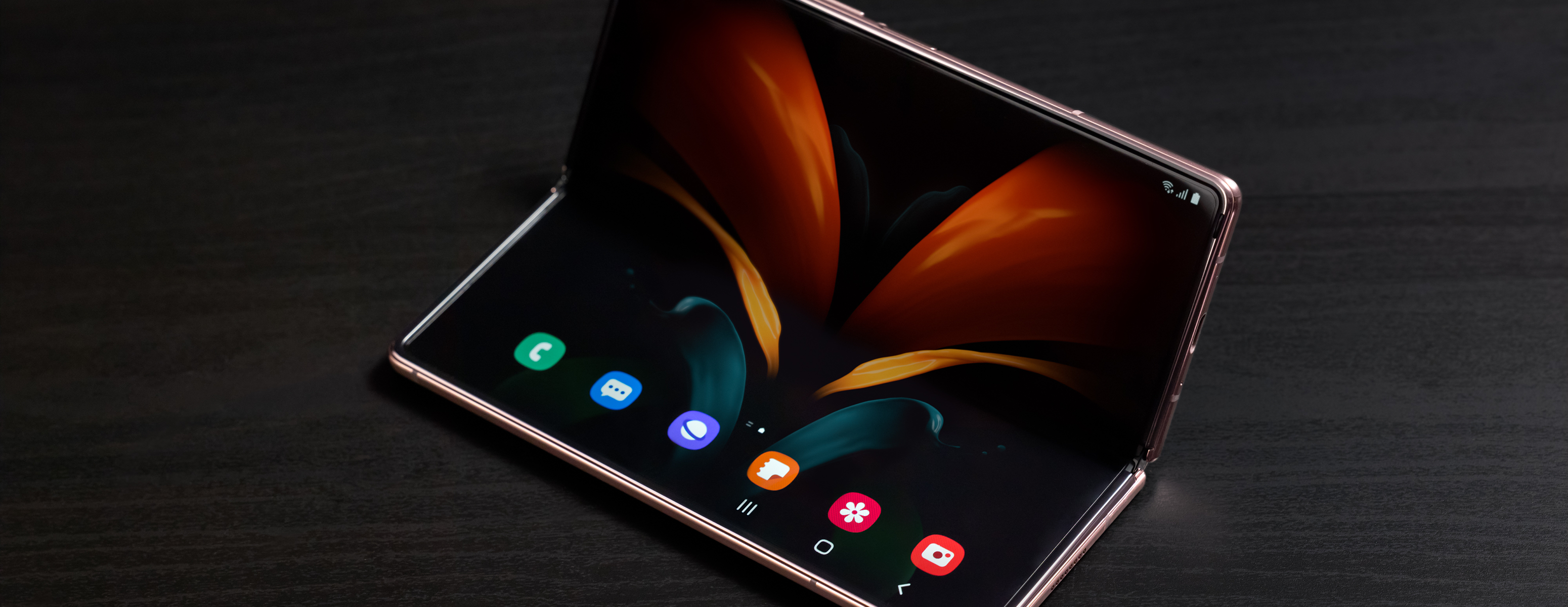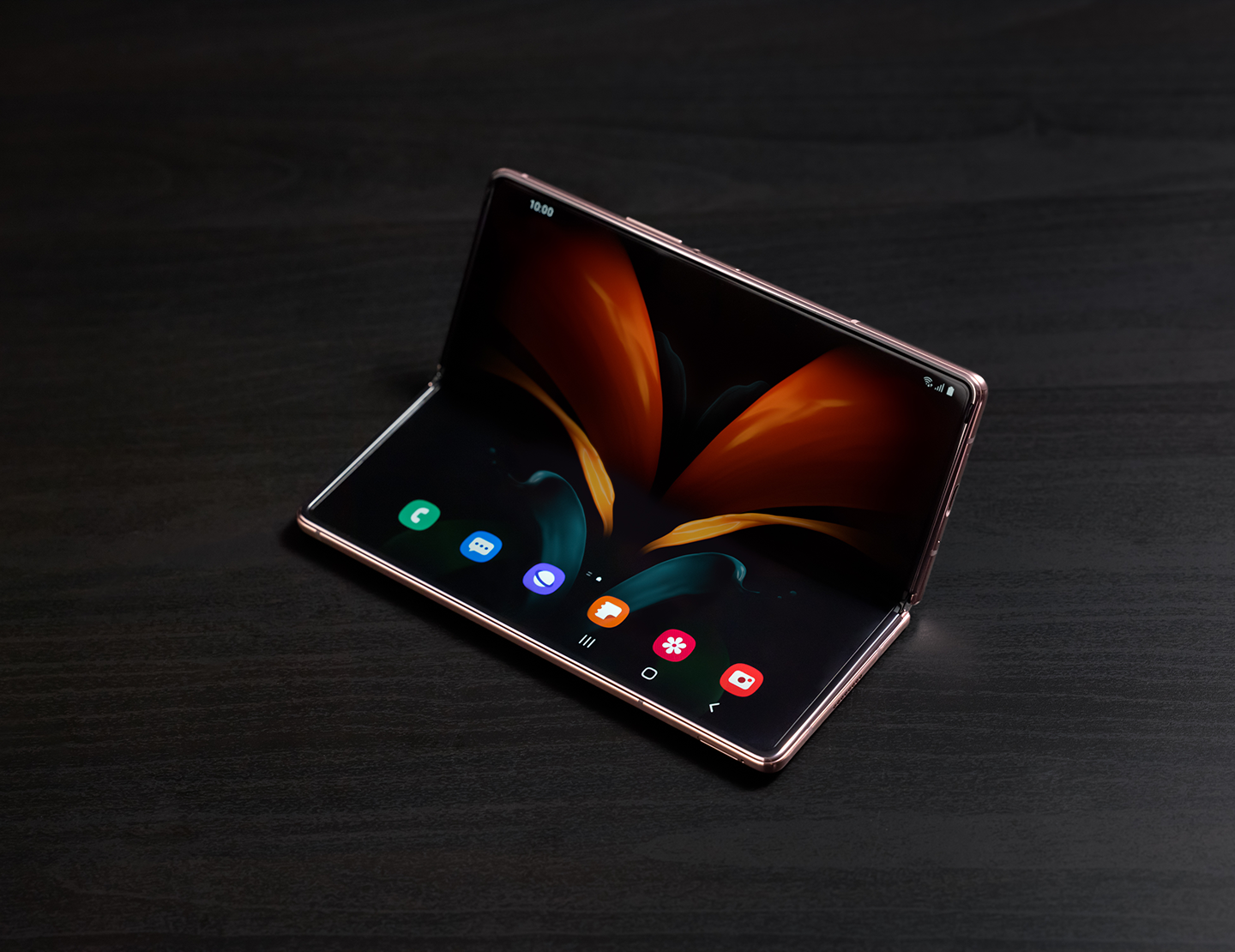The Return of the Foldable Phone
HiQ's Senior Software Tester Tuomas analyses the usability challenges of foldable phones.


"He is the closed circle. He is returning to the beginning."
When I started at HiQ in 2005, the era of smartphones was just beginning. In my pocket, I carried a compact clamshell mobile phone, the more advanced features of which included a clunky WAP browser and polyphonic ringtones.
At the time, the Nokia 9500 Communicator, with its full QWERTY keyboard, was at the top of its class. It was something a newly graduated engineer couldn't afford.
Little did I know then that more than a decade and a half later, flip phones would be back. At least Samsung, Huawei, Xiaomi, and Motorola are once again producing phones with foldable screens. Google is also rumoured to be creating a foldable phone, if not more than one – maybe even this year.
No innovation is without growing pains
Samsung launched its first Fold phone two years ago. The first model, in particular, was plagued by a number of technical missteps and, above all, an accident-prone structure. In Fold 3, the most obvious teething problems have reportedly already been cleared up. So, it was interesting to find out what you can do with the phone and how the apps work on the two screens that are quite different from each other. As a tester, I personally don't envision new opportunities for taking advantage of the increased screen area in terms of the user interface. Rather, my focus is on usability.
The vertically foldable main screen with a resolution of 2208x1786 is almost square when opened. While it may seem like a great aspect ratio for Instagram, many traditional apps may struggle to scale properly. Typically, some images may be stretched, and some of the interface elements, such as icons or buttons, may be too large – or sometimes too small. On the other hand, some of the texts may become a tad too small next to the huge icons. In the worst cases, a function may seem to spill off the screen, preventing you from using an essential part of the application.
At the other end of the spectrum is the narrow 2268x832 resolution cover screen, which even outshines the 21:9 aspect ratio of Sony's Xperia phones. On this screen, long words, in particular, can be broken unexpectedly. And the Finnish language is full of long compound words, especially when it comes to slightly more technical terms.
Sometimes, these cosmetic problems are caused by third parties: for example, embedded views or WebView elements. These may not be quickly fixed if a partner is not enthusiastic about making changes for a marginal group of users.
Although phones like the Fold 3 are a rare treat so far, buying such an expensive phone can be a bit of a nuisance if the apps are full of cosmetic flaws. Here at HiQ, we believe that quality is in the small details, and, therefore, the needs of users of less common devices should also be taken into account.
Dual-screen devices require a lot of development work
Dual-screen devices involve a lot of planning and testing. In addition to the interior and exterior screens, the transition in both directions must be taken into account. By default, an application that is active on the cover screen is moved to the main screen when the device is opened.
Switching in the other direction will only occur for the applications for which it has been explicitly enabled in the settings. Many applications cannot cope with these sudden changes in screen size and aspect ratio with a clean record. So, there is still room for improvement.
If nothing else, the development tools in Android 12.1, due out later this year, should help with app development. If the preliminary information on the XDA Developers website is to be believed, the horizontal space on the main screen can be better utilised. Manufacturers do not need to make their own tweaks to, for example, the split-screen mode. The lock screen promises functions on one side of the screen, with notifications appearing on the other. But the breakthrough is only likely to happen when another major player in the industry, Apple, joins the game. According to the latest analyses, we should not expect a foldable iPhone from Cupertino until 2024. On the other hand, trends come and go, and in three years, they can change in completely unexpected directions. Whatever the future holds, it pays to anticipate it.
Would you like to keep up to speed with the new technologies in mobile development? The experts of HiQ are at your service. Contact us!

